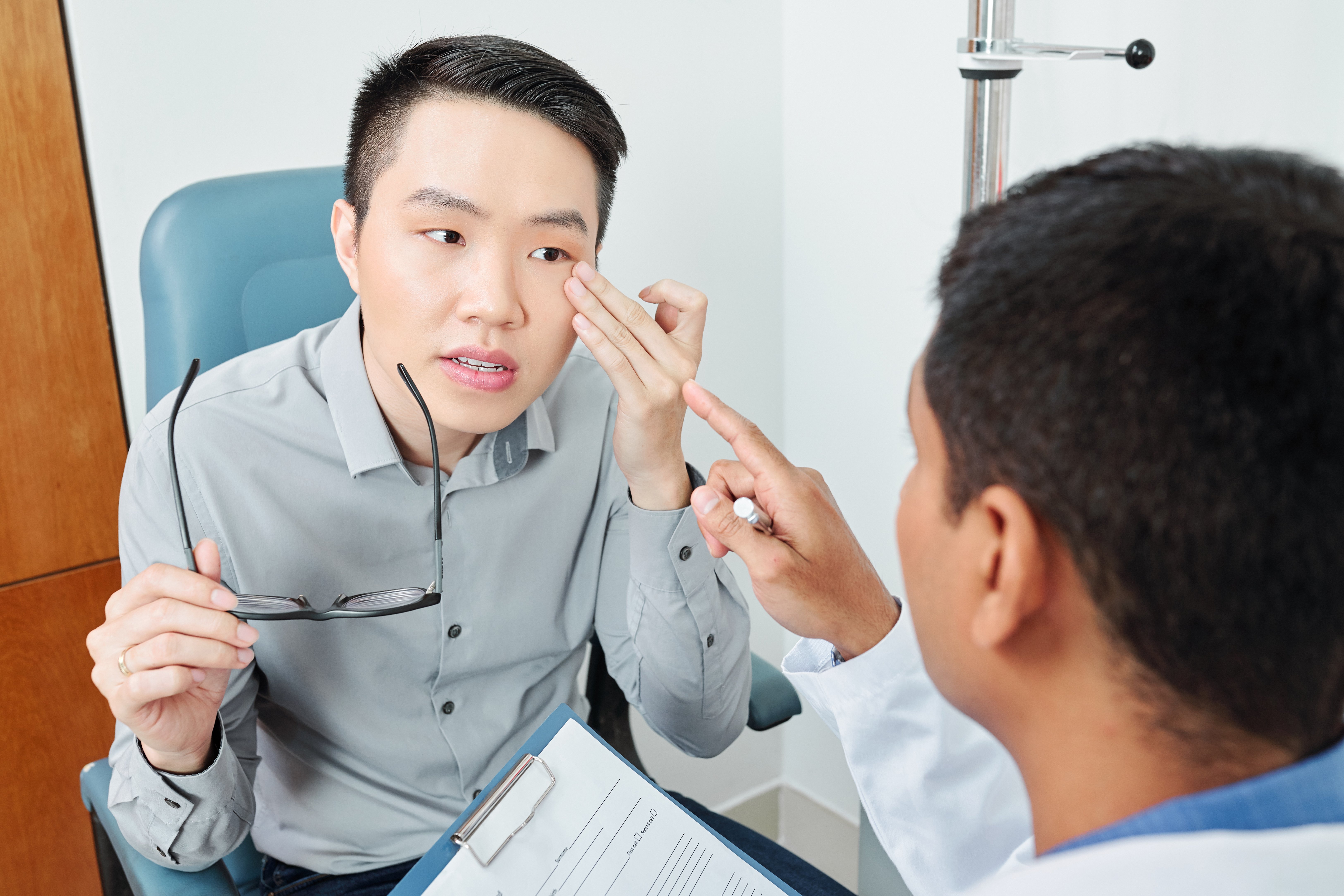Primary Health Insurance:
BlueCross BlueShield
United Health Care
Humana
Cigna
North Mississippi Acclaim
Medicare
Medicaid

Most people have heard of age-related macular degeneration, or AMD – a fairly common eye condition that is most often associated with people over the age of 60. It occurs due to deterioration of the cells in the part of the eye called the macula, found within the retina. It is responsible for central vision and our ability to see color and fine detail. What many people don’t realize is that there are two different types of AMD, wet and dry.
Wet macular degeneration is the less common form of the condition, accounting for around just 10% of cases. In most cases, patients are diagnosed with dry AMD first before it progresses to the wet variety. It is called ‘wet’ AMD because it is characterized by the abnormal growth and leaking of blood vessels serving the retina. These new blood vessels are weak, and this means that they leak fluid and blood into the layers of the retina. This causes scar tissue to form and prevents the retinal cells from functioning as they should. This compromises the patient’s vision, which gets increasingly worse until treatment takes place.
The symptoms of wet age-related macular degeneration are pretty much identical to those for the dry version of the condition and include the following:
Difficulty tolerating bright light.
Spots or shadows appear in your vision.
Straight lines that appear distorted, wavy, or bent.
Colors appear less bright than they should.
You find it difficult to visually adapt when you move from bright to dark environments.
Objects appear to change in shape or size when you look at them.
Objects may appear to move or disappear, such as a word you are reading may seem to jump lines or vanish, when looking at them.
The main difference between the symptoms of wet and dry macular degeneration is the rate at which they develop. In dry AMD, the condition develops slowly, and it usually takes months if not years to start noticing the symptoms listed above. However, once dry AMD turns into the wet type of the condition, the symptoms will develop much more rapidly, and it will soon become apparent that your vision has been affected.
Macular degeneration can affect anyone, although it is particularly common in older patients – hence being referred to as ‘age-related’ macular degeneration. However, some additional factors can increase your likelihood of developing AMD. These include the following:
Being obese (a Body Mass Index/BMI of over 30)
Failing to get enough exercise
A family history of the condition
Suffering from high blood pressure
Smoking
Taking certain medications, including some antipsychotics and drugs used to treat nausea and vomiting
Excessive UV exposure without adequate protection
Treatment for wet macular degeneration usually involves regular eye injections of medications known as anti-VEGFs. Alternatively, you may be recommended to try photodynamic therapy (PDT) which involves a special light being shined onto the back of the eyes to destroy the abnormal blood vessels.
If you are concerned about macular degeneration, or if you would like to learn more about the different types of AMD visit Primary Eye Care at our office in Tupelo, Mississippi. You can also call (662) 200-9842 to book an appointment today.